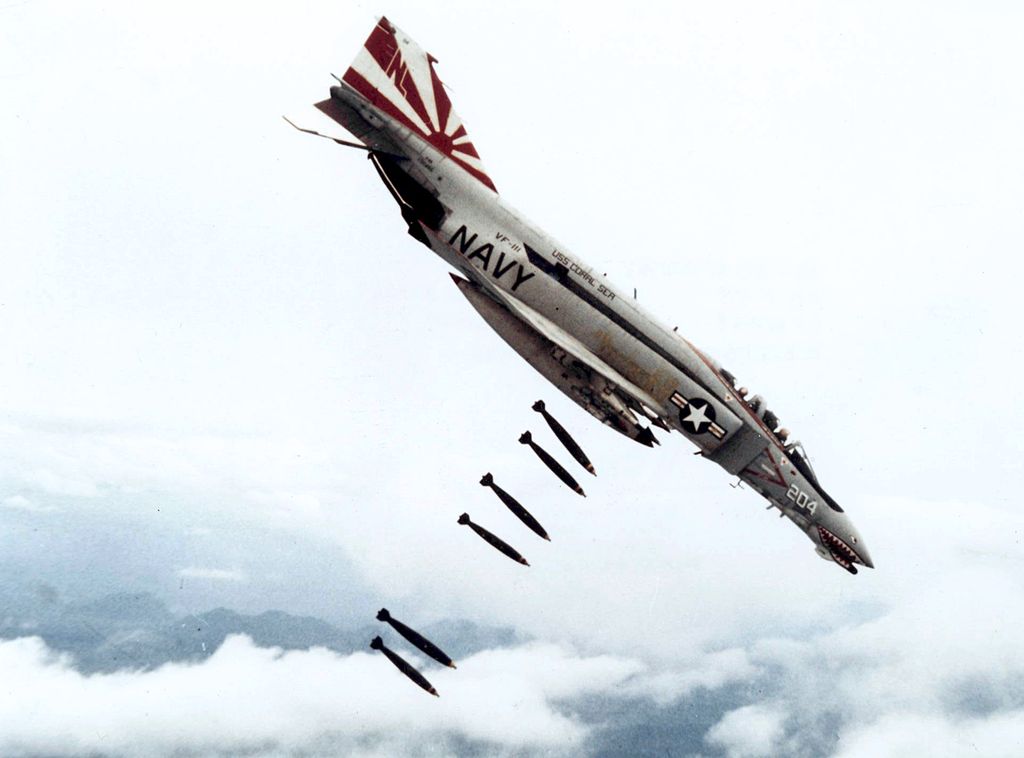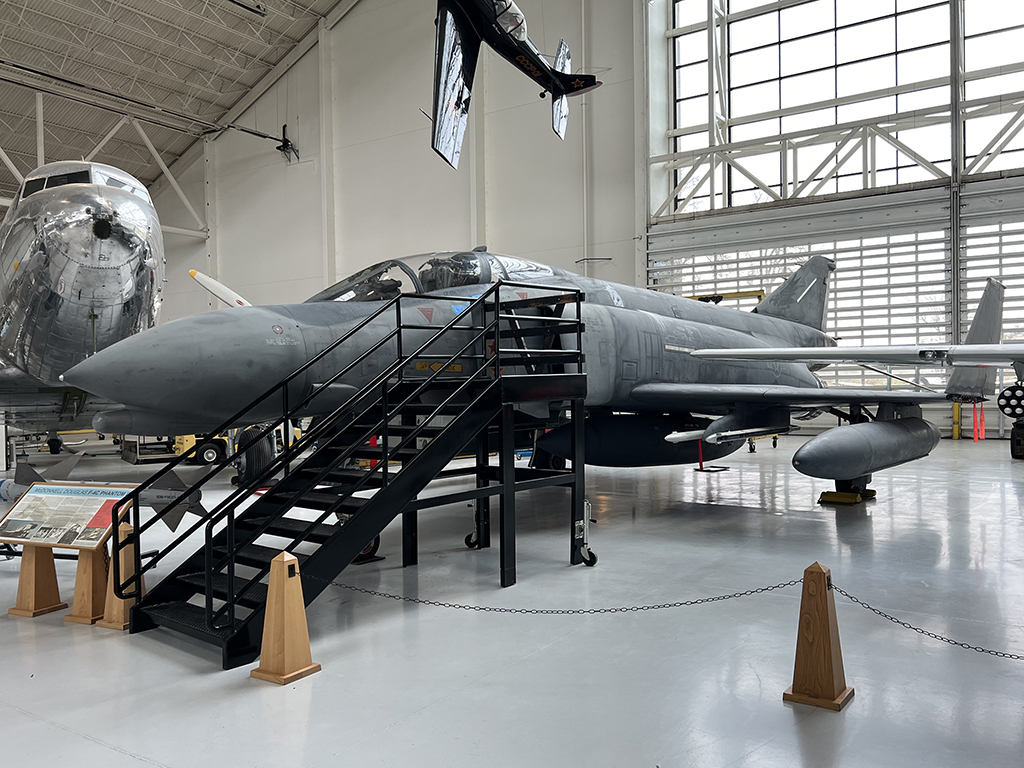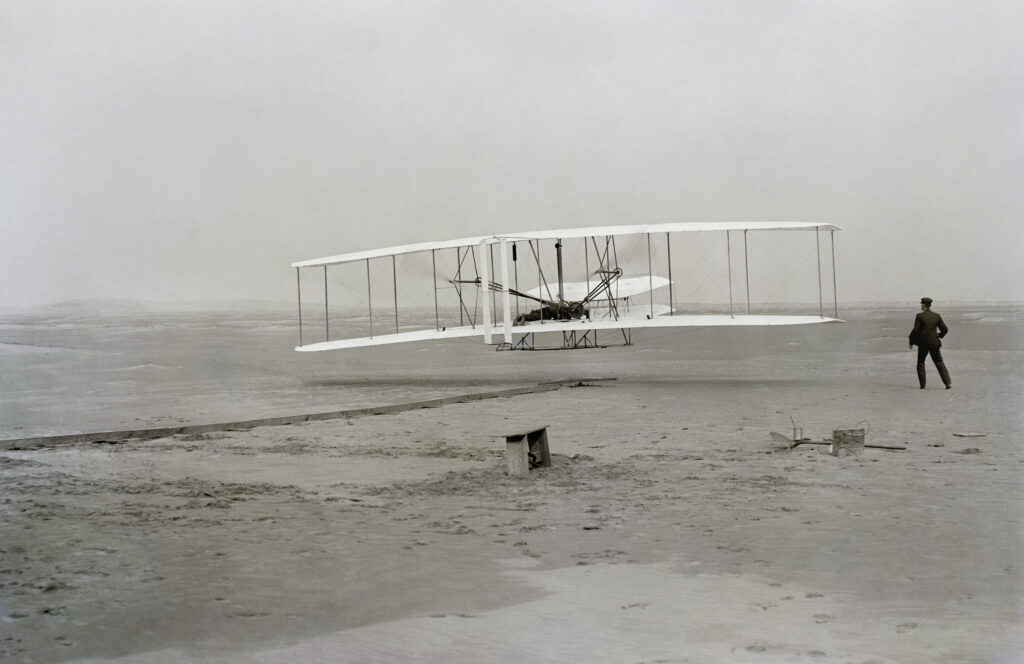By: Cayden Chen & Julius Lacano
This spring break the Evergreen Museum is empowering guests to learn about the past and inspire the future use of technology through the lens of aviation and space innovation. Soar over to the museum and explore our featured aircraft with a sneak peek inside its cockpit!
The legendary McDonnell Douglas F-4 Phantom II was developed by McDonnell Aircraft in the 1950s for the US Navy. The first multirole fighter in the world, the Phantom was soon adopted by both the US Marine Corps and US Air Force where it quickly gained popularity among military pilots thanks to its impressive capabilities and high performance. According to Tim Preach, a US Air Force Veteran and docent here at the Evergreen Aviation & Space Museum, “Flying in the F-4 was like driving in a Cadillac on the smoothest road.” Throughout its service, it served as a fighter, interceptor, and reconnaissance aircraft. And, when in its “Wild Weasel” configuration, the final aircraft was specifically designed for the suppression of enemy air defenses.
The Phantom II played a significant role in the Vietnam War, where it was used extensively in an air superiority and ground-attack role. Its ability to carry a large payload of weapons coupled with its high speed and maneuverability made it an asset in the conflict. The F-4 Phantom II also saw extensive action in other conflicts, including the Gulf War, Iran-Iraq War, and Arab Israeli conflicts.
Though the last Phantom II was retired from US service in 1996, its legacy as a reliable and versatile aircraft is widely recognized. Loved and fondly remembered by crews, it remains a favorite among aviation enthusiasts and military historians alike with many nicknames like “The Flying Anvil” and “The World’s Leading Distributor of MiG Parts.” One of the most famous was “Old Smokey” because, according to Docent Preach, “The F-4 produced so much smoke, you could see it coming from 60 miles away.” Though all US F-4 Phantoms have been recycled, Iran, Greece, Turkey, and South Korea still have upgraded F-4s in their active inventory, a fitting testament to this renowned aircraft.
The Phantom II on Display at Evergreen:
The USAF accepted this F-4C, S/N 63-7647, from McDonnell Aircraft of St. Louis, Missouri on November 12, 1963. It spent much of the next ten years in Southeast Asia serving with several different fighter units, including the 8th Tactical Fighter Wing (8 TFW) and the famed “Triple Nickels”: The 555th Tactical Fighter Squadron (555 TFS). During its Southeast Asian service, pilots flying this aircraft shot down two MiG aircraft; one in January 1967 and a second in June 1967.
In March 1976, the USAF assigned this F-4C to the 154th Tactical Fighter Group (154 TFG) of the Hawaiian Air National Guard stationed at Hickam AFB, Hawaii. This aircraft was later reassigned to the 142nd Fighter-Interceptor Wing (142 FW) of the Oregon Air National Guard in July 1987. The 142nd retired the aircraft in October 1989. In recognition of this aircraft’s service, this F-4C carries the tactical gray paint scheme worn by the Oregon Air National Guard during the late 1980s. On its intake splitter-plate are two red “kill marks” signifying its two aerial victories in Vietnam.



